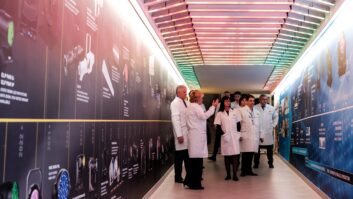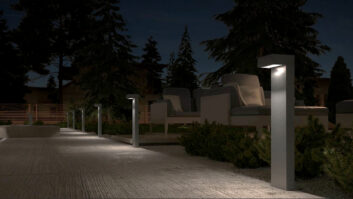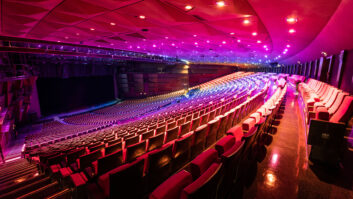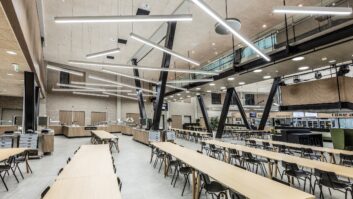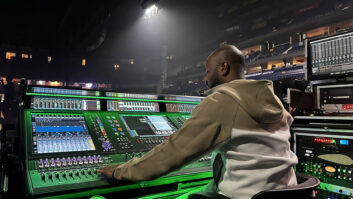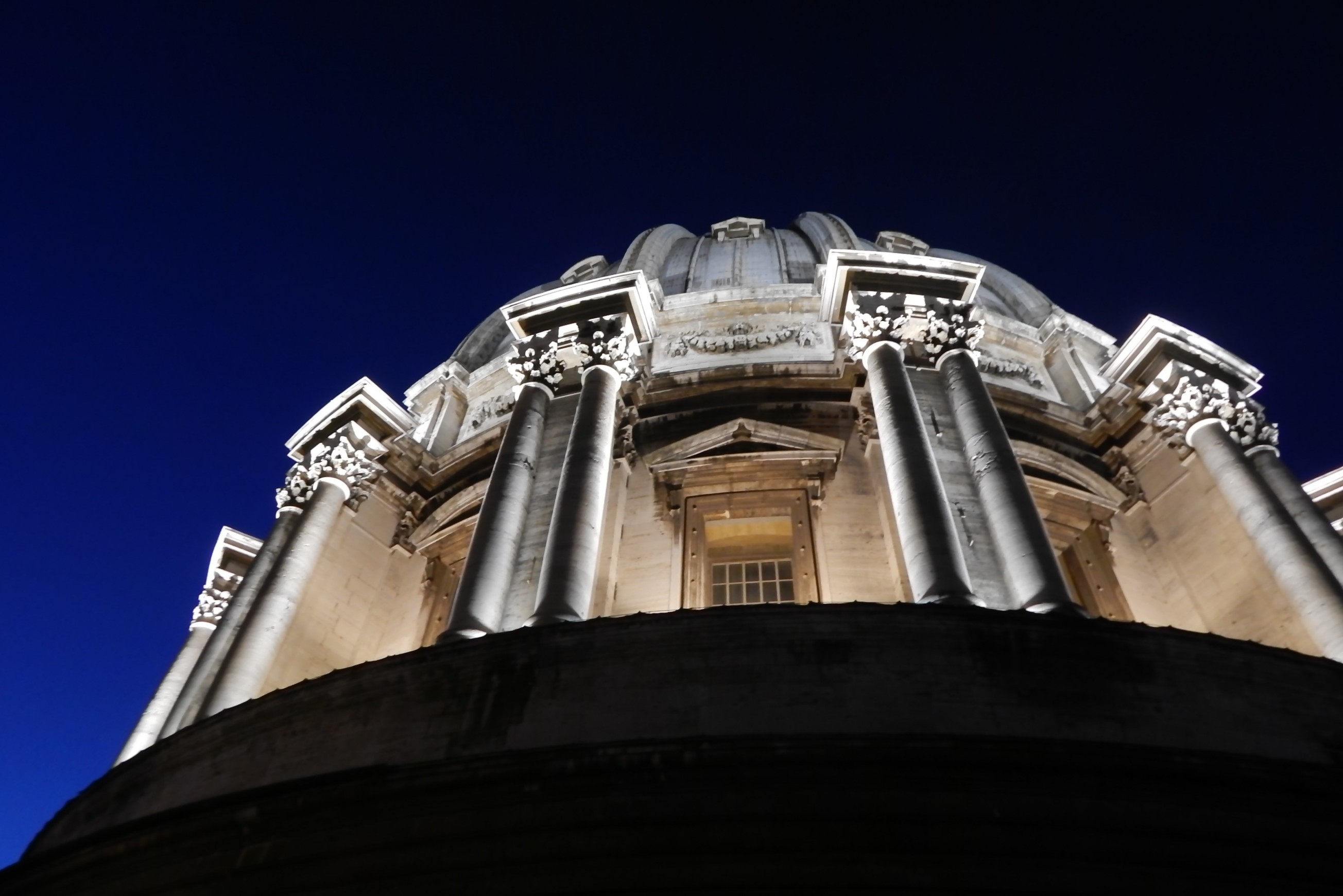
A new LED lighting system highlights the architectural, artistic and spiritual splendour of this Renaissance masterpiece, writes Mike Clark.
Fourteen years after an upgrade to its architectural lighting for the Jubilee, a special year of remission of sins and universal pardon, St Peter’s Basilica at the Vatican has taken delivery of a new LED lighting system.
The executive design was by ACEA’s public lighting department, represented by Bruno Lalli. The 340 fixtures (all IP67 Class I rated) are a combination of various versions of Jilspot, Elle and SylverLine instruments manufactured by Diamante Lighting of Alessandria and they highlight some of the basilica’s best-known features.
Outside, they are positioned at the main dome (designed by Michelangelo), tambour, lantern, cusp, smaller domes, façade, belfry, clock chamber, coronation statues and top corridor.
Inside the splendid church, the new LED lighting illuminates the Gloria at the main altar and the baldachin (canopy) of the confession altar (both designed by Gian Lorenzo Bernini).
Remo Guerrini, head of new projects with ACEA Reti’s Public Illumination Unit, states: “The new lighting at St Peter’s is the first stage of a large ACEA project for the illumination of 47 religious domes, bell towers and other tall buildings visible from the city’s vantage points.”
On the ropes
For complex installations such as the Vatican, with installation points that are not accessible by conventional means, ACEA calls in teams of rope access specialists. The company responsible for this work at St Peter’s – indoors and outside – as well as the second in this series of installations, at the Basilica of Santa Maria Maggiore, was A&G of Rome.
Regarding the difficulties involved in mounting equipment in a building of such great architectural and artistic importance, Guerrini continues: “For installation work inside the basilica we had the metal structures and power sockets used for the previous fixtures at our disposal, so there was no need to drill holes in the masonry or mount new brackets or supports for the LED units.”
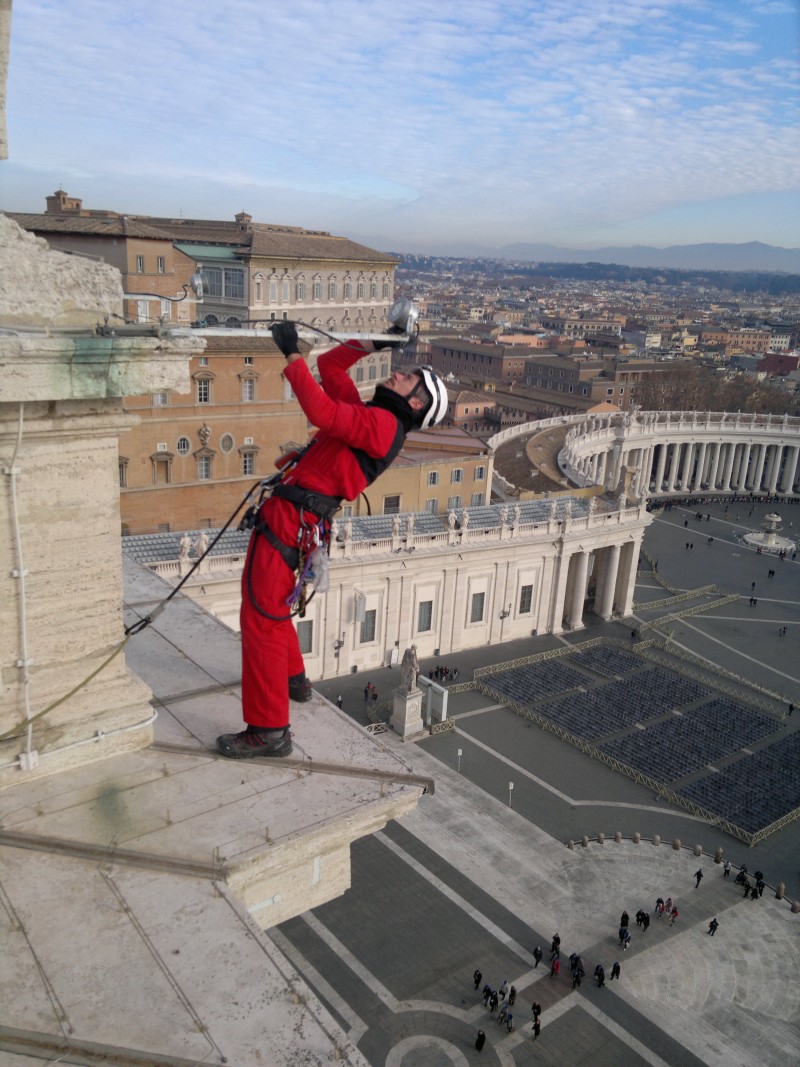
Six A&G staff worked on this project either as a single team or two three-men groups, in which one was particularly expert in progression on rope and suspension equipment installation and positioning and another provided rope support. The third organised material handling, before passing on to positioning cable runs, brass support bars and mounting the fixtures by means of stainless steel nuts and bolts. Once the fixtures were installed, at dusk they were precisely aimed, following instructions received from an ACEA technician on the ground.
A&G owner Gennaro Agnello explains: “Some installation points were reached following passageways and stairs only the Fabric of St Peter’s staff could guide us along. Originally a committee of 60 experts appointed in 1523 by Pope Clement VII, with the responsibility for building and administering the basilica, the Fabric now manages all aspects of the church, ‘with respect to the preservation and decoration of the building and behaviour among employees and pilgrims who come into the church’.
“It’s hard to realise the sheer scale of St Peter’s from the ground – the gold-plated bronze sphere atop the dome is at a height of over 400ft – where it can be very windy!
“One of the main problems was that we were dealing with works of art, so we had to respect the travertine masonry and lead sheeting used. No holes could be drilled in the masonry and lead… so on the entire basilica we took great care with the support bars, as everything had to be absolutely reliable and avoid the visible areas of the building.”
Avoiding crowds
A&G co-owner Fabrizio Giampà continues: “Inside, as well as total respect for the building and keeping noise to a minimum, we had to take care with the countless tourists, as the basilica was always open during working hours. At Christmas, in particular, we sometimes had to stop to avoid curious crowds forming. The areas immediately below us were cordoned off and above the entrance we had to take even greater care when working outside with strong winds, extending our ‘security perimeter’.”
Of the Diamante fixtures installed by A&G, the seven-LED Jilspot7 Compact units at St Peter’s are deployed with flood optics and wide beam configuration, whereas the rectangular Elle Compact models are fielded in three versions (with 24, 48 and 72 LEDs), and the SylverLine Boxed linear LED bars in 18- and 27-LED formats.
Guerrini adds: “This new system will ensure lower maintenance costs, since the expected operating life of each LED instrument is approximately seven to 10 years, whereas discharge lamps’ life is around 40 months. LED technology also gives better light quality, as the light sources – which in this case have a colour temperature of either 2,800 or 3,800º Kelvin, according to where they are installed. It also has a more intense emission and gives brighter colours, which is also important, as the dome and façade are among the most photographed symbols of the Eternal City.
“Power involved will be considerably reduced – for example, the fixtures previously used to light the lantern absorbed 40W each, whereas the new ones don’t exceed 9W. This ratio can be applied to almost all other fixtures and should allow an estimated 75% energy saving.”
The new system is switched on directly with a timer under the control of the Fabric of St Peter’s and is connected with the Vatican City’s public illumination and, with this ambitious ongoing project, ACEA will eventually enable the millions of tourists who visit Rome every year to see dozens of monument under a new light.
